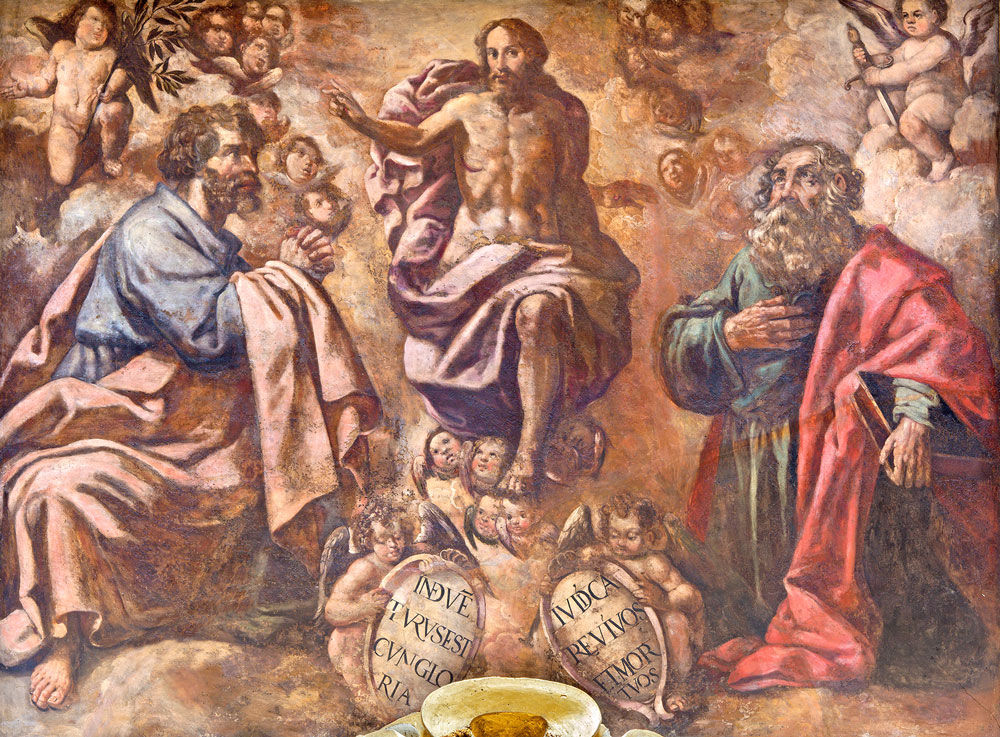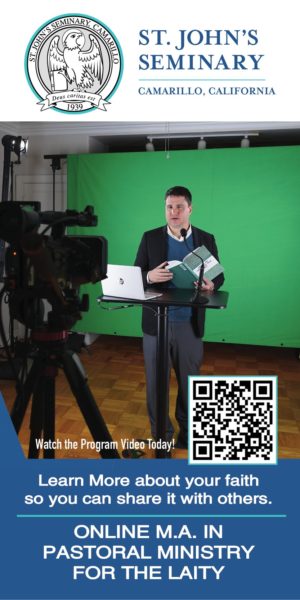If you miss this week’s great feast, you’re missing out on God’s perfect closure to the telling of his story — and ours.
On Aug. 6, the Church marks the day when Jesus took his inner circle — Peter, John and James — to a mountaintop, where he was transformed before their eyes. His clothes became dazzlingly white. He was accompanied by Moses and Elijah, and they were conversing about the days to come.
The apostles were so awestruck they hardly knew what to say. Peter proposed that they build three booths there on the mountain, one for Jesus and the other two for his heavenly companions.
At last an unmistakably divine voice proclaimed Jesus to be his Son: “This is my son, my chosen; listen to him!”
It is, curiously enough, one of the most thoroughly documented events in Jesus’ life. The story of the Transfiguration appears in the first three Gospels (Matthew 17:1—9, Mark 9:2-8, Luke 9:28—36), and it is mentioned in one of St. Peter’s letters (2 Peter 1:16—18). There may be an allusion to it in the fourth Gospel as well (John 1:14).
In the early Church, the message of Jesus’ Transfiguration was seen as the last of the great milestones of our salvation. It brings completion, resolution and closure to the story.
On Easter Jesus conquers death. On Pentecost he shares the Spirit. And with his Transfiguration he reveals a lasting and glorious dwelling for his people.
Those three moments correspond rather exactly to the three great feasts of the Jewish calendar: Passover, Pentecost and Sukkoth. These were the pilgrim feasts for Israel. The Torah required every male among the chosen people to travel to Jerusalem, the holy city, to take part in the rites and festivities. And Jesus’ moment of Transfiguration took place during the last of these, Sukkoth.
Sukkoth, the feast of booths, was the festival of reaping — when the people went into the fields to complete the harvest. During those days they dwelt in huts, made from the branches gathered in their labor.
Moses himself had established the feast as an occasion of thanksgiving, but also as a remembrance of Israel’s years in the desert. “You shall keep the feast of booths seven days, when you make your ingathering from your threshing floor and your wine press. … For seven days you shall keep the feast to the Lord your God at the place which the Lord will choose” (see Deuteronomy 16:13-16).
Thus, for Jews in Jesus’ time, Sukkoth was a holy day of obligation — a moment of required rejoicing. Jesus obediently observed it, as did his disciples.
Sukkoth was a festival that looked backward to the days of the Exodus, but also forward to a day of fulfillment — the day when God would send his Anointed, his Messiah. This was foretold by the prophets, especially Isaiah (32:15-18), who spoke of a day when:
“The Spirit is poured upon us from on high, and the wilderness becomes a fruitful field …
“Then justice will dwell in the wilderness, and righteousness abide in the fruitful field …
“My people will abide in a peaceful habitation, in secure dwellings, and in quiet resting places.”
Through the Prophet Hosea the Lord announced: “I am the Lord your God from the land of Egypt; I will again make you dwell in tents, as in the days of the appointed feast” (Hosea 12:9).
This is the feast Jesus was celebrating when he took his three closest friends to the mountaintop. In all three Gospels the scene follows upon Jesus’ prediction of his own suffering and death. The saints tell us that this vision was necessary to keep the inner circle from falling into despair when Jesus underwent his Passion.
The event also comes soon after Peter’s confession of Jesus as the Son of God. And the voice from heaven seems to confirm Peter’s word.
For the Transfiguration is a moment of extraordinary revelation. God is not merely disclosing information. He is giving his people a stunning vision of his inner life. What the disciples see on the mountaintop is the mystery of Trinity. They behold it in the voice of the Father, the presence of the Son and the enclosure of the Shekinah, the glory cloud, which is the unmistakable sign of the Holy Spirit.
They see, too, that Jesus is the fulfillment of the ancient law and the prophets. On the mountaintop, he is joined by Moses (the lawgiver) and Elijah (the prophet). And the three are speaking about Jesus’ “departure” — literally his exodus. Only much later would the apostles understand Jesus’ dying and rising as a prelude to his glorification, when he ascended to prepare a dwelling for them with his Father.
That is the true end of the story, and it is the meaning of the feast, a day too little noticed in the lives of modern Christians.
Yet this is our day, and we should celebrate in a big way. Why? Jesus has revealed something great to us. In these days of the Messiah we are invited to live with Jesus — in the company of Moses and Elijah and countless saints — in the everlasting “booth” of the Holy Spirit.
It’s not just a long-ago moment we remember. It’s not just a day in the far-off future. It’s today.

